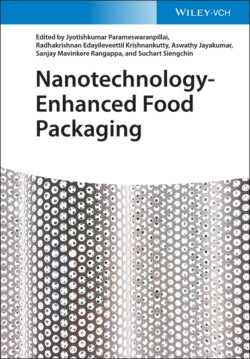Читать книгу Nanotechnology-Enhanced Food Packaging - Группа авторов - Страница 13
1.2.1 Nanotechnology Applications in Preserving Meat Density, Taste, and Presentation
ОглавлениеNanotechnology offers several options to improve meat quality and taste. Nano-encapsulation techniques have been widely applied to enhance flavor release and retention and maintain the balance of food. These bioactive molecules nanocarriers are popular for their safety and supply-based feature worldwide. Rutin is a popular dietary flavonoid, but its use is limited in the food industry [19]. Its low solubility and ferritin nanoencapsulation have improved the solubility and the thermal and UV stability of the ferritin-trapped routines compared with the free routine. Thus, nanoemulsions are widely used in producing lipid-soluble biological compounds that can be generated with easy processing methods utilizing natural foods and can also be engineered to increase water dispersion and bioavailability. Nano-packagings are important ways to boost the bioavailability of nutraceutical compounds because of their subcellular size, which contributes to higher bioavailability than large particles and produces faster and longer releases of encapsulating food nutrient compounds. Many metal oxides such as titanium dioxide and silicon (SiO2) are widely used as colorants or flow agents in foodstuffs. SiO2 nanomaterial is also one of the nanomaterials widely common in foodstuffs with flavors [20].
These nanotechnology-based applications of modern nanocarriers can help the food industry preserve the meat color and taste and make the food colorful, visually attractive, and presentable for the consumers.
